EAST RAND CHEESE
Goat farm churns out World Cheese Award winners
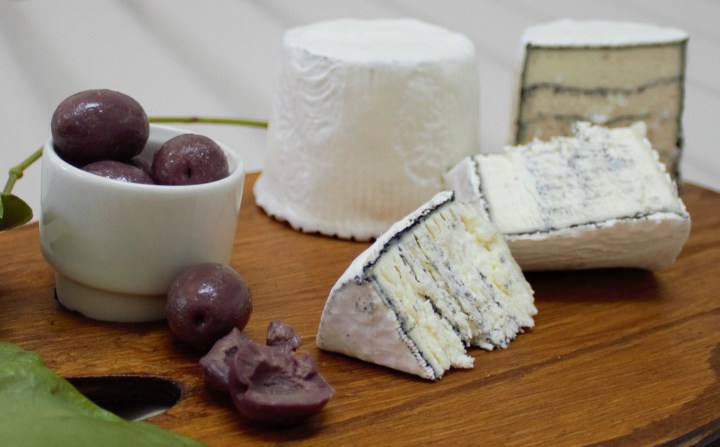
In Bapsfontein, Rina and Norman Belcher are creating world-beating goat’s cheeses on a black wattle plantation.
The first time I went to Bapsfontein was to steal peaches. We picked them on abandoned farms that had been bought by the SAR. Then we stopped at the local hotel and I gaped at its painted garden-bed statues, bigger than garden gnomes, of dark skinned, patched-clothed men toiling, one with a spade, another a wheelbarrow, others hoeing and raking.
The second time I went to Bapsfontein, a few decades later, was to write about oddball Country-and-Western braais at the same hotel. The photographer and I passed, at the entrance, a man with a bulletproof vest under his open pink windcheater, the handle and nose of a firearm evident. Beside him was a slightly chipped brown worker still bent over a spade.
The third time it is completely different. There’s nothing weird and discomforting on a black wattle plantation, now the location of a white Saaren goats farm and tiny cheesery. It’s rather lovely and feels peaceful, calm.
I’m here to visit the goat’s milk cheesemaker couple who are creating an international stir from the Bapsfontein area on Gauteng’s east Rand. I’d already tasted some of their outstanding small-scale produce at the Cheese Gourmet in Linden, from chef-supplier La Marina in Modderfontein, at a Lientjie Wessels’ lunch as well as some of our top-chef Joburg restaurants.
We’re on benches under thatch in an open-air boma, opposite a cottagey kitchen where pies are already being made for the weekend cafe here where breakfasts, lunches and and teas of crumpets, raw honey and cream or cheese platters are madly popular especially among the cyclist and biker crowds. Next door to the kitchen is a more formal tasting room that houses a wall of medals and awards for the Belcher couples’ cheeses, beyond a long row of Rina Belcher’s collection of interesting hydrangeas.
There are 24 World Cheese Awards and 68 Champion cheeses. So far.
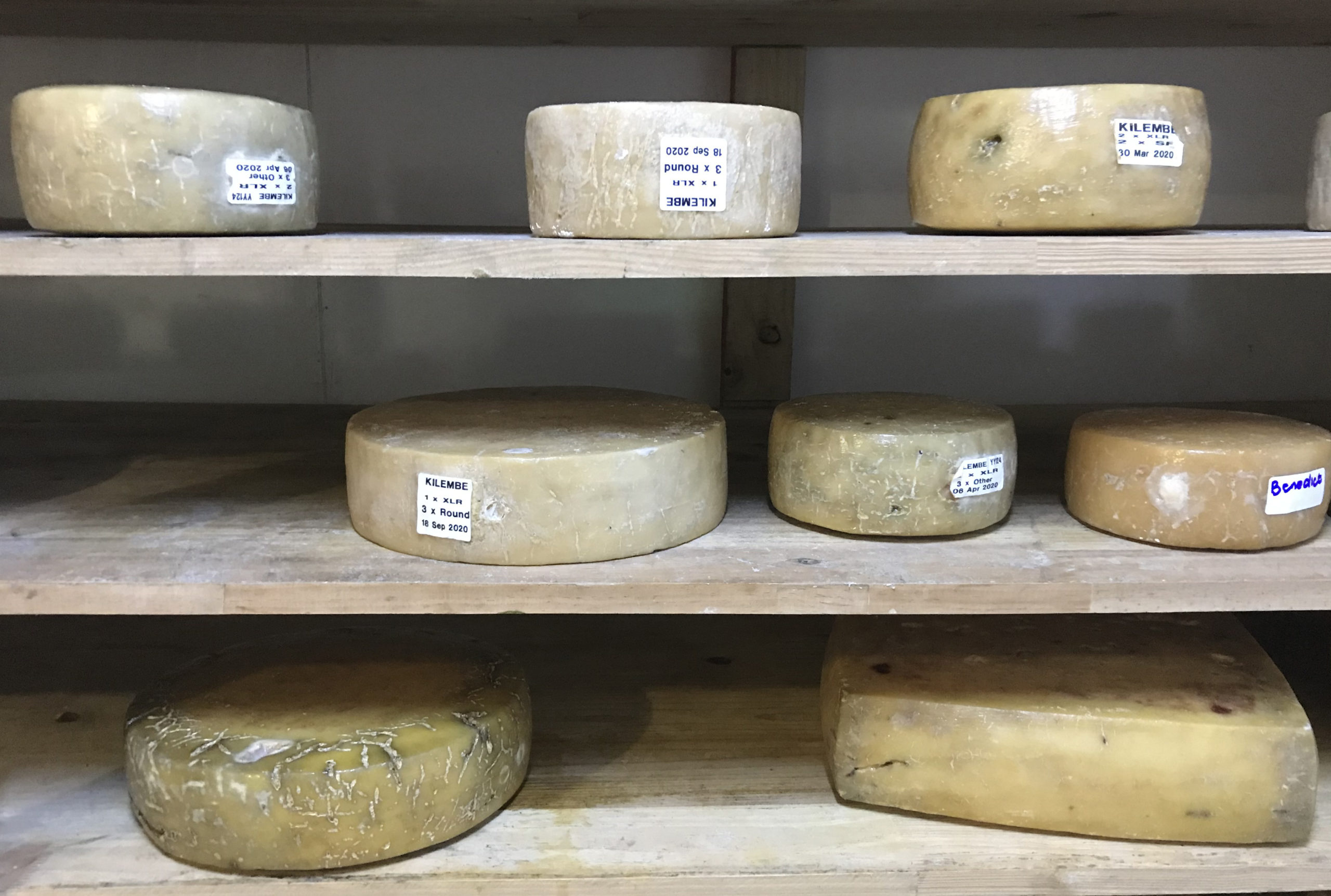
The big wheel cheeses in a cool room include Kilimanjaro and two international Super-golds that are Kilembe and Kalabash. (Photo: Marie-Lais Emond)
It occurs to Rina and me as we, including Norman, Rina’s husband, sample an array of the damned good cheeses with charcoal ciabatta that, oddly, of the six superb Belnori Boutique cheeses we’re tucking into, only one is a goat’s milk one. It was just what was ready that day. I am thrilled that the goat’s milk cheese is Forest Phantom, named after the mist that roils around the wattles on cold days.
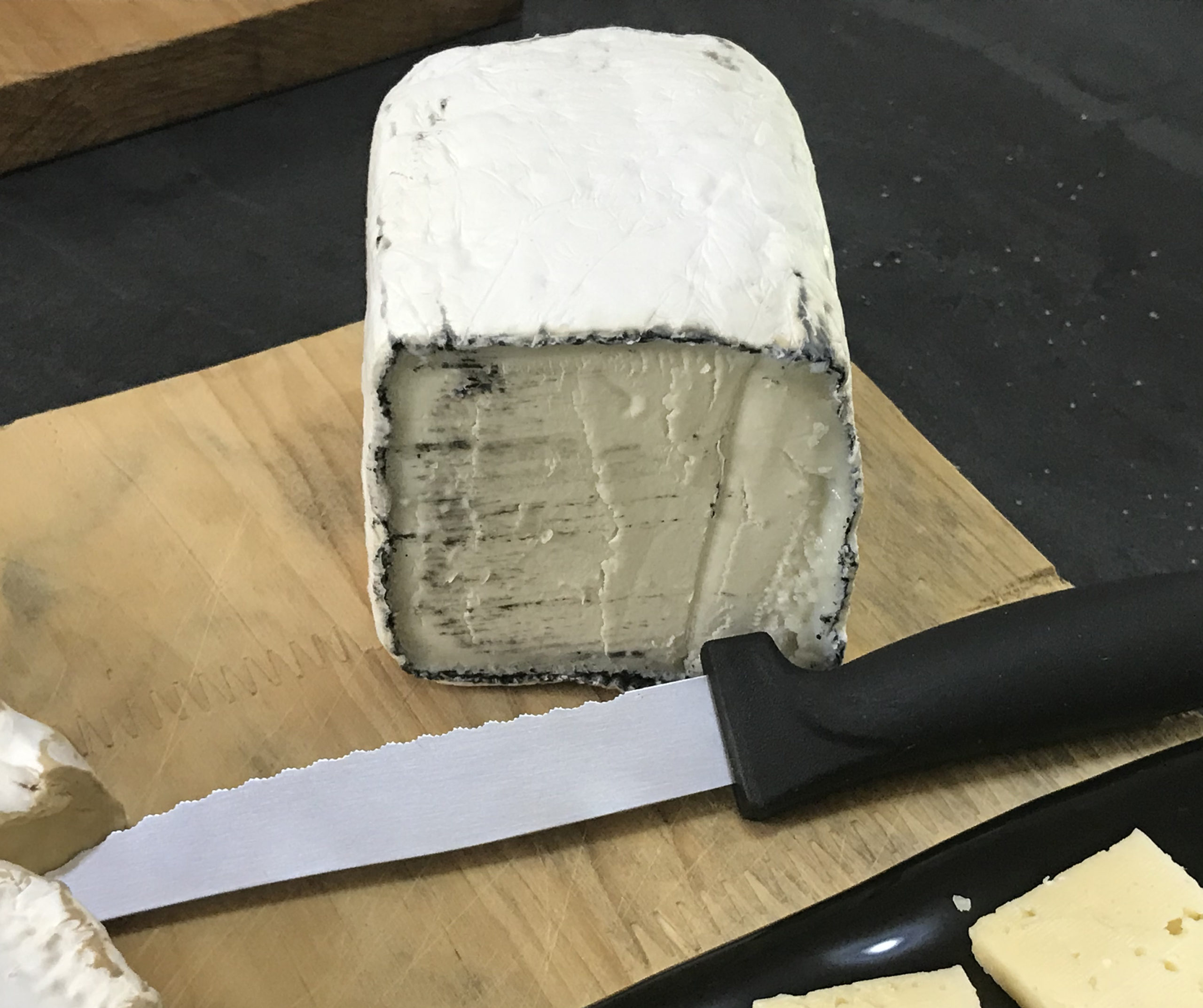
The Forest Phantom is creamily and easily one of the most beautiful-tasting cheeses I’ve ever eaten. (Photo: Supplied)
This Forest Phantom is a big section of an ovoid fat log of white delectability, a full fat, semi-soft, mould-ripened cheese edged lightly with ash that’s often used to counter goat’s cheese acidity. It’s creamily and easily one of the most beautiful-tasting cheeses I’ve ever eaten and looks even more gorgeous against the dark bread. Like many of Belnori’s cheeses, it’s a World Cheese Award Winner twice over and regarded as one of our own very, very best cheeses too.
I will later in the day grab the happy opportunity of trying another full-fat semi-soft Belnori SA Champion Cheese and Dairy Product of the year in 2019, the St Francis of Ashisi. That one is inoculated with Penicillium camemberti spores and made with 50% each of goat’s milk and Jersey milk. It features light layers of ash throughout a round log.
I’ve also had and used Cabrito chèvre balls in oil and loved the quite famous goat’s milk Mulderswood, studded with green Madagascar peppercorns.
The Belcher couple do use other local farms’ Jersey and sheep’s milk to make their cheeses. Rina does much of the inner cheesery work and Norman the outer cheesery work. They’re both past retirement age, parents of grown-up children.
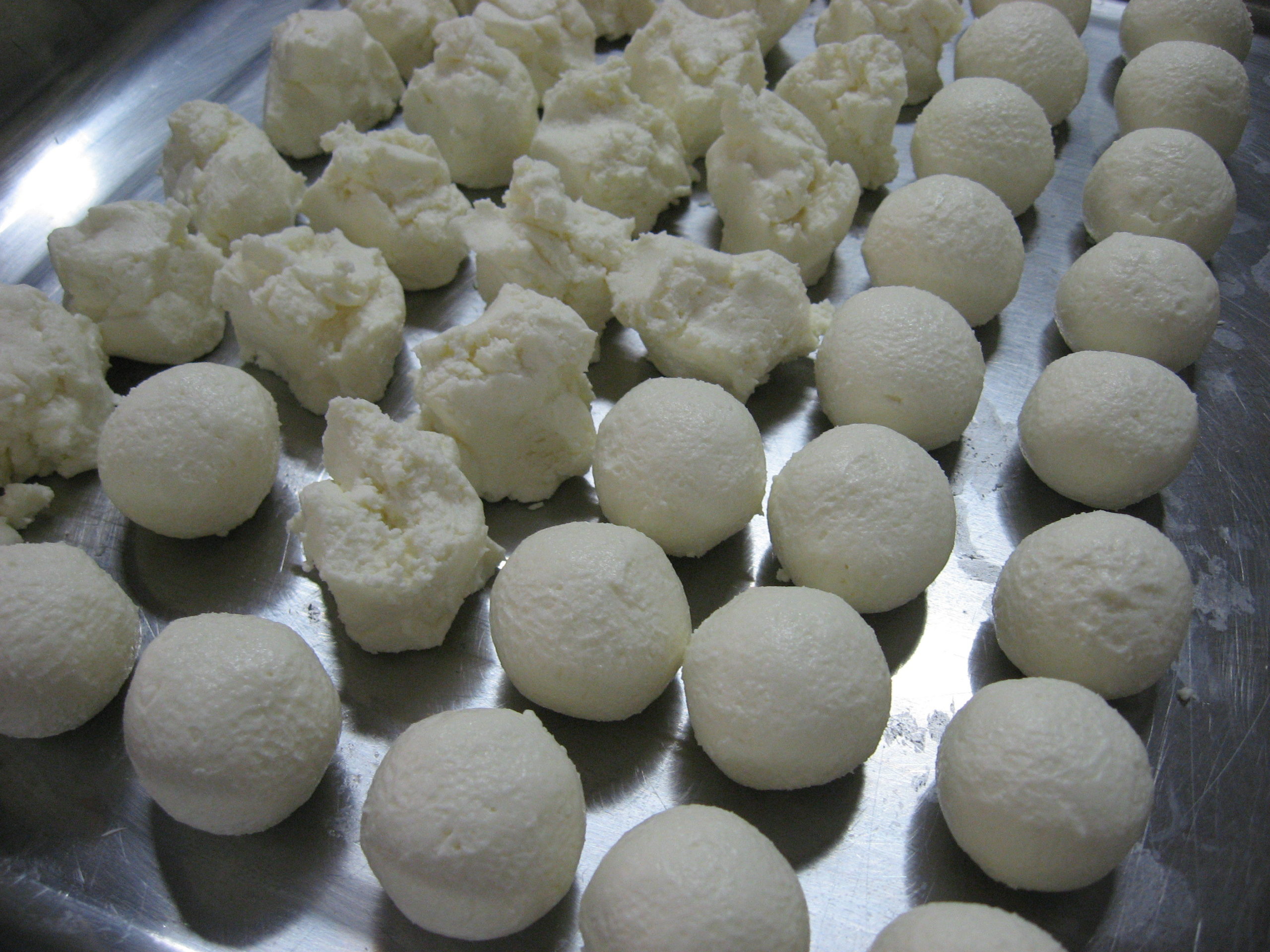
Cabrito balls in the making. (Photo: Supplied)
They took over the 15 hectare place from one of their children 16 or 17 years ago and wondered what to do with it, reckoning olives would take a long time to fruition but, on Norman being given a billy goat, they thought about that too, seeing how clean and clever goats are. Then, getting four ewes, they thought about goat farming more seriously. Norman did a feta cheese making course.
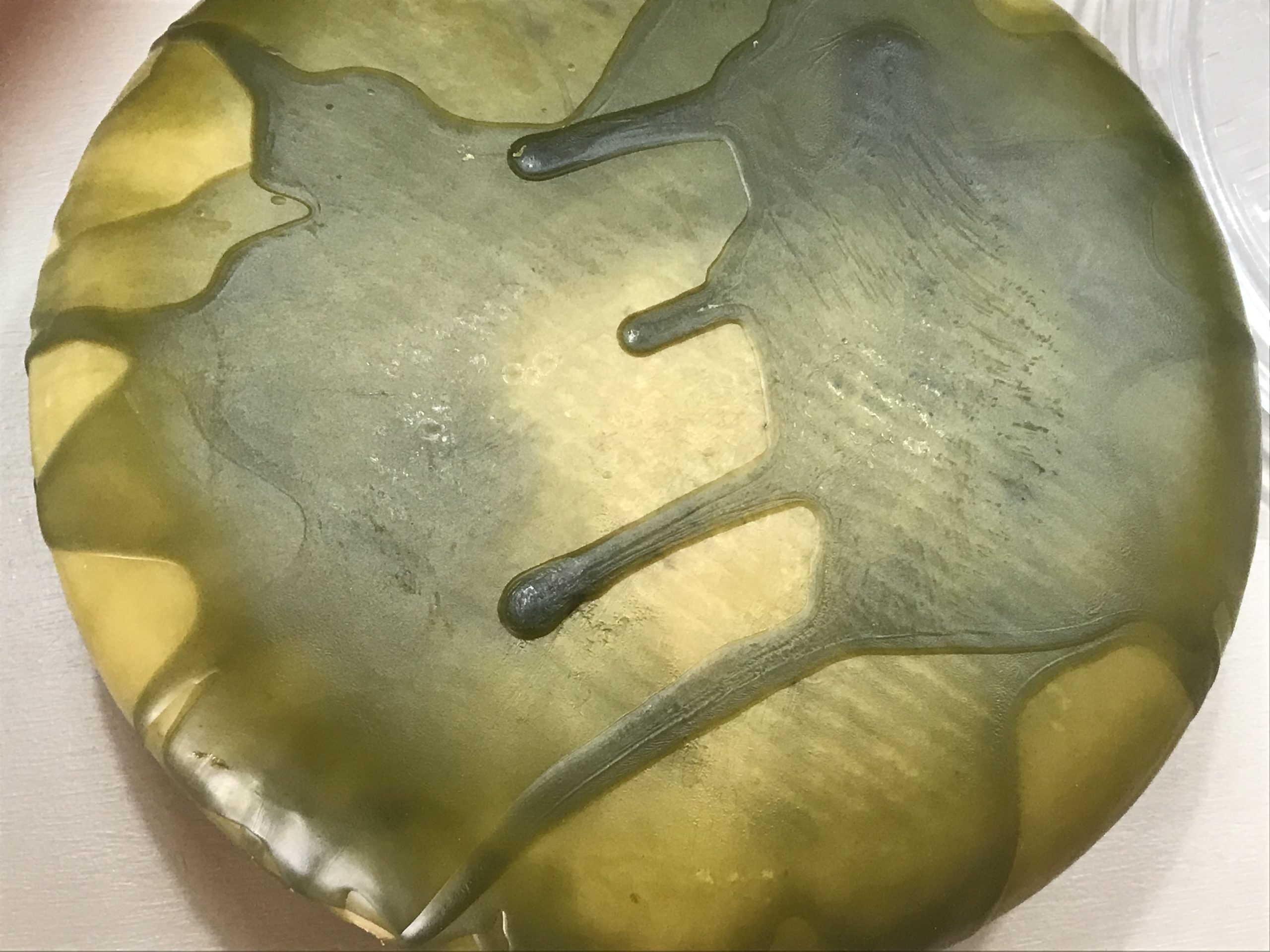
The first award was for Tanglewood, an experimental semi-hard cheese that still wins awards, recognisable by the forest green drippy wax. (Photo: Marie-Lais Emond)
From there onwards the couple found out as much as they could, keeping everything as simple and small as possible, inventing processes and equipment when there was none. They won their first award in 2005 for an experimental semi-hard goat’s milk cheese Rina called Tanglewood. It regularly wins awards still, very recognisable by its forest green “drippy” outer wax. Their fetas – rosemary and olive, plain and lavender – also won in 2005 and continue to win awards.
Today there are 100 ewes at Belnori and they’re upset about the mud and damp. It’s been raining long and hard and the goats cluster on the cement feed platform to keep their hooves clean.
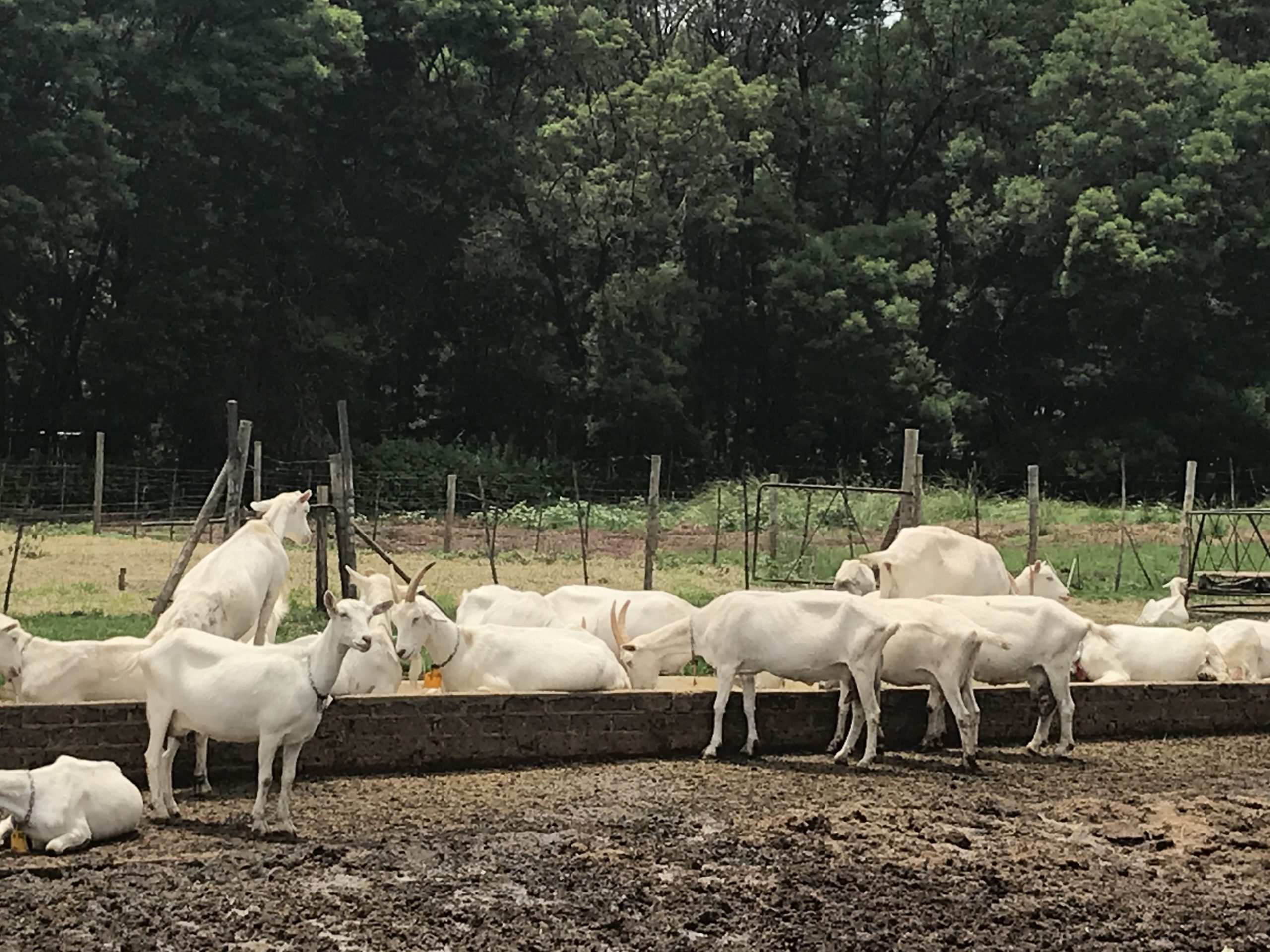
It’s been raining long and hard so the goats cluster on the cement feed platform to keep their hooves free of mud. (Photo: Marie-Lais Emond)
Earlier, after I looked into the milking parlour in which the goats cleverly manage much of the process themselves in their neat, orderly way, Norman and I wandered back to the rooms where the cheeses are produced, some kept and carefully aged. We pass the gate to a white house and two small dogs run towards us.
“This is where we live,” he said joking about people living at their places of work. He gave me a shy look: “I’ve been doing this for over a decade and a half and I still love it.”
Belnori is of course a composite name combining the couple’s surname and first names and is now known all over the world, as is the label of a middle-eastern looking shepherd of old, with a crook.
We are still tasting the cheeses other than the delightful and delicious Forest Phantom. There are some relatively fresh and also two aged Camemberts of Jersey milk, though Belnori has also won awards for its goat’s milk Camemberts. The aged ones are just right for that seeping cheesiness before any sulphurous air creeps in. This is a wonderful picnic.
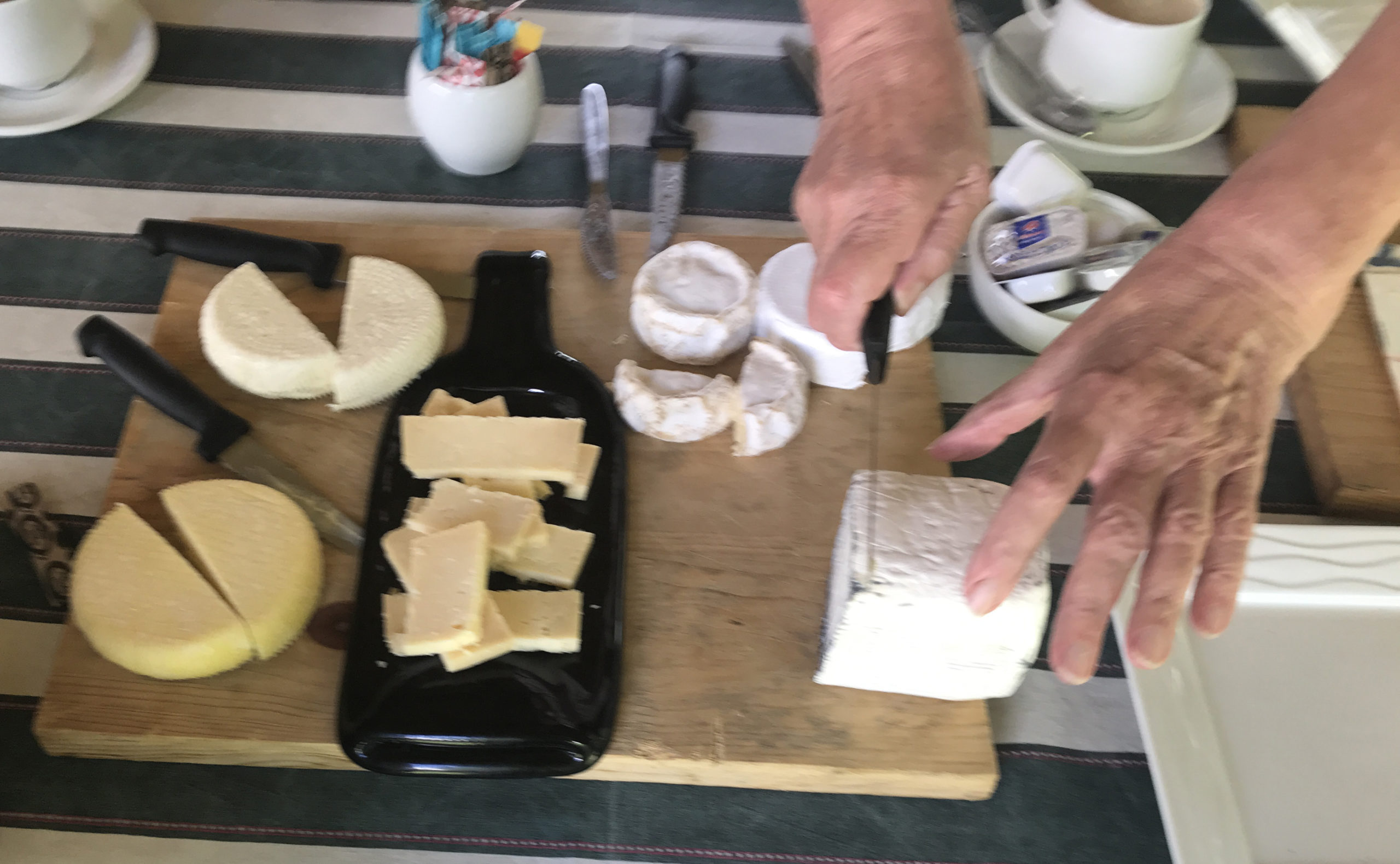
We’re still tasting the cheeses other than the goat’s milk. (Photo: Marie-Lais Emond)
There are also two intentionally fresh-tasting, patterned-crust cheeses of the stracchino style, simply made of Jersey milk, the freshest one called Daisy and the older, two-day, called Buttercup. These are the major sellers, I’m surprised to hear, among all the other greats. In the middle is a platter of slices of what seems to me to be another great cheese, albeit not a goat’s milk one, a very new cheese that Rina has been “playing” with. I like the Gruyère type of texture with a kind of mature-Cheddary crystal edge to it but Rina keeps popping tiny bits into her mouth, gazing into the distance.
“What’s it called?”
“It doesn’t have a name yet,” she replies slowly and softly. “I’m not even sure about it.” It’s a cheese of wonder.
Kobus Mulder, author of South African Cheeses, was a great support and inspiration to the Belchers and the Belnori cheese, Mulderswood, is named after him.
The so-called big wheel cheeses that have most won international awards including the Super-golds are the hard goat’s milk Kilimanjaro and especially the six-to-eight-months-aged caprino-style, firm and nutty Kilembe. The equally aged and firm Jersey milk Kalabash is also a Super-golder.
We speak of how chefs would love to come here, visit and taste all these incredibles for themselves, even with the agents. It’s such a beguiling experience and I ask Rina if they’d ever do something like that for groups of chefs, thinking of the ones I know, or even trainee chefs. She and Norman seemed super-keen.

A more formal tasting room houses a wall of medals and awards. (Photo: Marie-Lais Emond)
Bapsfontein, to the Belchers when they arrived here was more like “farming rusty old cars and dogs on chains” and I compare that with my own strange experiences.
“I sometimes wonder what the hell we have done here,” says Rina.
A succession of transfixing cheese tastes created by an out-of-any-ordinary mom-and-pop team, who keep everything small and constantly exciting, has replaced anything that was before. A beautifully sapid memory. DM/TGIFood






 Become an Insider
Become an Insider
Comments - Please login in order to comment.